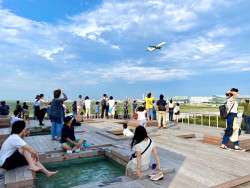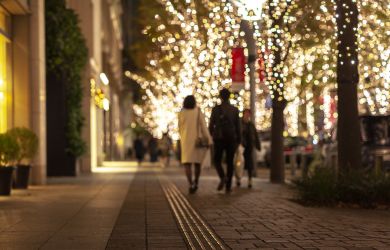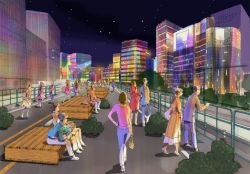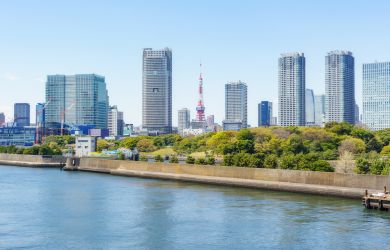
June 26, 2008
Here Be Monsters
From ESP labs to Pokemon panics to death cults, Japan is a wonderland of the bizarre. Metropolis takes a Fortean approach to the country’s mysteries
By Metropolis
In almost every area of the country, you’ll find intriguing and baffling phenomena that defy easy rational explanation. Are these myths? Superstitions? Scientific anomalies? Or awkward realities that challenge our rationalist assumptions?
ISSIE, KAGOSHIMA PREFECTURE
Is this Japan’s version of the Loch Ness monster, or a local cryptid that occasionally surfaces in Kyushu’s Lake Ikeda? The best known sighting was in 1978, when 20 people watched a large, black creature, measuring about 5m long, gilding through the waters of the lake, which is set in the caldera of an extinct volcano.
KAPPA, SAGA PREFECTURE
Usually thought of as purely a creature of folklore, the kappa is a kind of water imp with a fondness for cucumbers, sumo and, occasionally, abducting people and animals. In addition to ancient tales and legends, there is also tangible evidence of its existence in unexamined mummified remains. One impressive example, found in the thatched roof of a house in Kyushu, has now been adopted by a local sake company as a mizu no mamori kami, or “water protection god.”
HEIKE CRAB, YAMAGUCHI PREFECTURE
The back of the Heike crab found in Japan’s Inland Sea looks like the angry face of a samurai. Local legend suggests the crabs are the reincarnations of the Heike clan warriors who committed suicide by jumping in the sea after their defeat at the naval battle of Dan-no-ura in 1185. A more prosaic explanation is that fishermen were reluctant to eat any crab that appeared to have a human face, thus creating a system of “unnatural selection” that favored human-faced crabs.
HIBAGON, HIROSHIMA PREFECTURE
A smaller version of America’s Bigfoot, the Hibagon is, according to eyewitness reports,
a smelly, snub-nosed mountain-dweller with glaring eyes. The main sighting was in 1972 in the mountainous area around the town of Hiwa.
TSUCHINOKO, OKAYAMA PREFECTURE
This chirping reptilian cryptid, which reportedly looks like a fat-bodied snake with a thin neck and a wide face, has a price on its head. Anybody capturing a specimen stands to gain a ¥20 million reward from the municipal government of Yoshii, the town near where it has been seen. One eyewitness, 82-year-old Mitsuko Arima, said, “I just pointed at it and asked, ‘Who are you? Who are you?’ It didn’t answer me, but just stared. It had a round face and didn’t take its eyes off me. I can still see the eyes now.”
PANAWAVE CULT, GIFU PREFECTURE
One of Japan’s strangest cults is Panawave, a doomsday cult, founded in 1977. The estimated 1,200 members prepare for the apocalypse and typically dress in white. They also use mirrors and white vans to deflect “dangerous” electromagnetic radiation. In 2003, cult members had a standoff with police in Gifu after they refused to move their convoy of white vans. Sociologists and psychologists believe that such cults often express deep social anxieties, in this case, technophobia and fears of pollution.
LOST TRIBE OF ISRAEL, NAGANO PREFECTURE
The origins of the Japanese people remain shrouded in mystery. One theory links them with the Biblical Lost Tribes of Israel. The evidence in support of this includes the resemblance of the Japanese omikoshi, carried around during festivals, to the Ark of the Covenant, and the similarity of the tokin box worn on the forehead of yamabushi monks to the phylactery used during certain Jewish religious ceremonies. Parallels have also been drawn between the Ontohsai festival held at the Suwa Taisha shrine and the Biblical story of Abraham attempting to sacrifice his son, Isaac.
SUICIDE FOREST, YAMANASHI PREFECTURE
Like the Golden Gate Bridge in America, Aokigahara Forest has earned an unenviable reputation as a suicide magnet, drawing desperados from far and wide to end their lives in its somber glades. Perhaps it’s just the natural beauty of the location in the shadow of Mt Fuji, a mysterious empathy with the spirits of the dead that already inhabit this twilight zone, or some kind of “copycat” effect. Whatever the original reason, the location’s profile is now high. In his bestselling The Complete Manual of Suicide, author Wataru Tsurumi recommended it as “the perfect place to die.”
POKEMON PANIC, TOKYO PREFECTURE
In 1997, an episode of the popular children’s cartoon Pokemon, broadcast on TV Tokyo and its affiliates, showed a rapid series of red and blue flashing backgrounds. Over the next 30 minutes, 618 children were taken to a hospital with nausea and seizures, and a further 12,000 reported a range of disorienting illnesses in the following days. While photosensitive epilepsy was initially identified as a factor, the large number of people affected and the role played by the media suggest this was more
a complex case of mass hysteria. Contributing factors may have been displaced social anxiety related to Japan’s falling birth rate, several highly publicized child crimes, and technophobia.
ORIGIN OF UFOs, MIYAGI PREFECTURE
The UFO craze can be traced to the widespread sightings of UFOs in America’s northwest in the ’40s. This may be partly attributable to Japanese wartime activity. Desperate to strike back at America, the Japanese military devised an airborne bomb, called Fugu because of its resemblance to a blowfish. Suspended from balloons, the bombs, released from a base near Sendai, followed the prevailing winds and soon started turning up in US airspace, where their unexplained appearance, combined with official secrecy surrounding their investigation, may have helped to generate rumors of extraterrestrial space craft.
JINMENGYO, YAMAGATA PREFECTURE
In 1990, a carp with a human-like face was discovered in a pond in the grounds of Zempo Temple in the town of Tsuruoka. Whether a genetic mutation connected to Japan’s intensive carp breeding or some kind of “semi-reincarnation,” the man–fish became a media sensation and an instant tourist attraction.
JESUS IN JAPAN, AOMORI PREFECTURE
The story of Jesus is almost universally known, but, according to the small town of Shingo, there was a sequel. Based on a letter found in the ’30s, a local legend states that it wasn’t Jesus who was crucified but his brother, while Jesus escaped through Siberia to Japan, where he married, had several children, and died at the ripe old age of 106. A grave supposed to contain his remains is now the focus of an annual “Christ Festival.”
LIVING DOLL, HOKKAIDO PREFECTURE
After a 3-year-old girl died in 1919, a local family forgot to cremate her favorite doll with her. Instead, they placed the doll, named Okiku after its owner, in the keeping of the Mannen-ji shrine. Since then, the hair of the doll has been continuously growing. Even stranger, since WWII, her mouth has also started to open slightly.
Finally…
YONAGUNI SEA RUINS, OKINAWA
Located off the island of Yonaguni, near Taiwan, these underwater structures—a 120-meter platform, a corridor and a staircase—appear to have been hewn into rock around 10,000 years ago. If true, this suggests an extremely ancient civilization with advanced technology that later disappeared in some unknown cataclysm.







